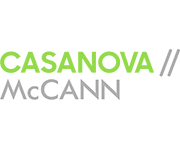Strategic alliances: Powering your inorganic growth strategy [REPORT]
June 5, 2019
 As change accelerates in the business world and technology disruption dominates, organizations need a clear strategy to create or acquire the capabilities required to keep pace and seize new opportunities. Learn how alliances can play a key role in helping organizations understand and overcome current challenges.
As change accelerates in the business world and technology disruption dominates, organizations need a clear strategy to create or acquire the capabilities required to keep pace and seize new opportunities. Learn how alliances can play a key role in helping organizations understand and overcome current challenges.
New prominence for strategic alliances
Entire industries are being transformed as computer-based automation fundamentally changes how business is done. In this fourth Industrial Revolution, the digital technologies disrupting the business environment range from big data analytics to artificial intelligence (AI) to the internet of things (IoT). The result is a shift in which physical and digital technologies are merging to create ever more interconnection. This fundamentally alters the way organizations understand information, make decisions, develop products, and serve their customers and markets.
Amid demands for a faster pace of technology innovation and faced with the increasing complexity of the marketplace, organizations are being forced to reevaluate and broaden their strategies for developing or accessing new capabilities. In-house research and development (R&D) is a powerful tool, but its disadvantages include long cycle times and high costs. Partnerships can help provide faster, less costly, and less risky access to assets and capabilities, particularly in areas that fall outside an organization’s core competencies.
Once an organization has defined its vision and strategy and has identified the assets and capabilities required to win in the market, it’s then faced with the question of how to obtain those assets and capabilities. The organization’s leaders need to be able to answer—with confidence—the question of whether to build, buy, or partner.
To download report CLICK HERE.





























